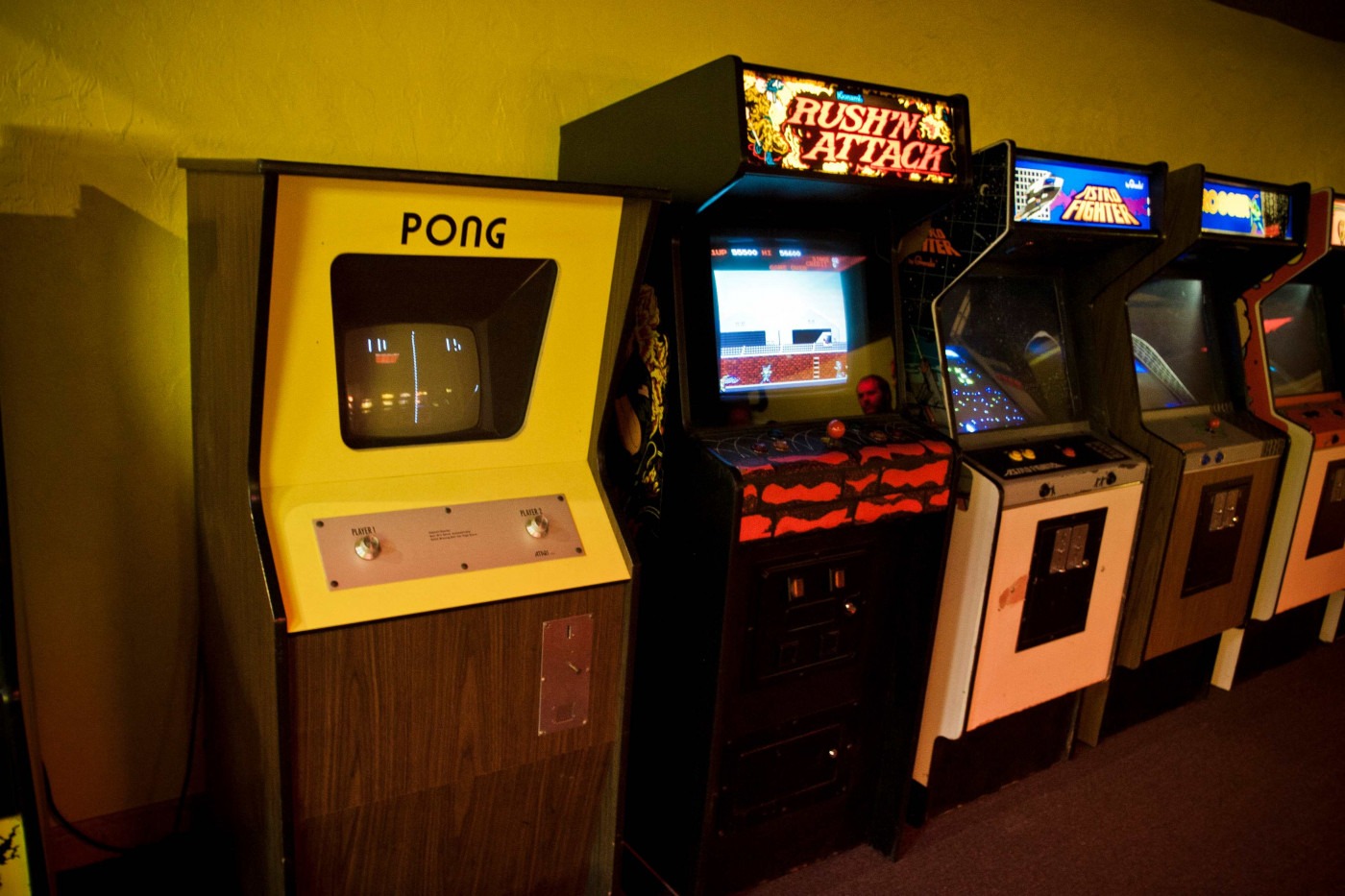The rise of the arcade
When we look back at the 1970s, we think of tie-dye shirts, bell bottoms, the disco, but most importantly, the arcade. From Space Invaders to Pac-man, the 1970s experienced an arcade golden age with many games and machines becoming so iconic that they can still be seen in media culture today.
What kicked off this arcade craze is a game not many would suspect. That game is, of course, Atari’s Pong. Pong was by no means a graphically complex game, featuring just two digital paddles and a ball. This simple yet beloved arcade classic was released in 1972 and quickly became the first successive commercial videogame. In turn, this helped the video game industry to rise, and gaming was slowly but surely being seen as a legitimate hobby. Surprisingly, Pong was not made with the aim to become successful. For Allan Alcorn it started off as a training exercise which impressed the Atari co-founders, who decided to manufacture the game based on its quality. However, this also led to another pivotal moment in history as Atari and Magnavox went head-to-head in a patent infringement lawsuit over Pong. This led to a long battle between the two and Magnavox experienced a financial boom through filing lawsuits. While Magnavox would not have been a so-called ‘patent troll’ at the time, this Pong patent infringement lawsuit did lead to the first major patent troll case in 2002.
The arcade craze quickly grew with the release of an iconic arcade staple – Space Invaders. For those who are not familiar with the game, Space Invaders is a fixed shooter game in which the player moves a laser cannon horizontally across the bottom of the screen, in order to shoot at the aliens above it. The aliens begin in five rows of 11 and slowly move down while shooting at the player. The game ends when the aliens reach the bottom, even if the player still has three lives. One of the elements that makes the game more fun and immersive is that the music speeds up in turn with aliens’ movement. Lastly, a mystery ship will zip across the top of the screen and award bonus points if destroyed.
it is plain to see that the 1970s experienced a boom in arcade gaming, propelling the industry forwards.
Space Invaders was released in 1978 and was developed by Taito in Japan and shortly licensed to Midway Manufacturing for overseas distribution. This game was the first of its kind and set the template for the genre. What truly makes the game even more impressive is that the designer, Tomohiro Nishikado, had to design custom hardware and development tools in order to complete the game. Despite this specifically designed hardware, Nishikado was still unable to programme the game in the way he originally wanted. While he continued to work towards the end goal, he realised that the processor could render the aliens’ animation graphics faster when there were fewer aliens on screen. This led him to embrace the bug and use it as a feature of the game so that when the player destroys the aliens, they speed up. From there, Space Invaders took over the gaming scene and became the highest grossing game of all time. It inspired numerous video games and was ported and re-released in various forms.
Another notable game that contributed to the golden age of arcade gaming was Asteroids, Atari’s most successful coin-operated game. Asteroids was yet another space-themed game, a multidirectional shooter released in 1979 by Atari. In the game the player gets to control a single spaceship amongst an asteroid field, which occasionally has flying saucers. The player must then shoot and destroy the asteroids and saucers while protecting themselves. As the game progresses the number of asteroids and flying saucers increase. The game was a hit and sold around 48,000 upright cabinets and roughly 9,000 cocktail cabinets. The game was also quite popular as it was one of the first to allow players to enter their initials for a high score.
Overall, it is plain to see that the 1970s experienced a boom in arcade gaming, propelling the industry forwards. Some more notable games that followed shortly after in the 1980s include Pac-man, Donkey Kong, Frogger, Q*bert, Mario Bros, and many more now-beloved classics. These games are now iconic within the media, which is seen most notably with the pixelated enemy alien from Space Invaders, which is used as emblem of video games within pop culture.

Comments